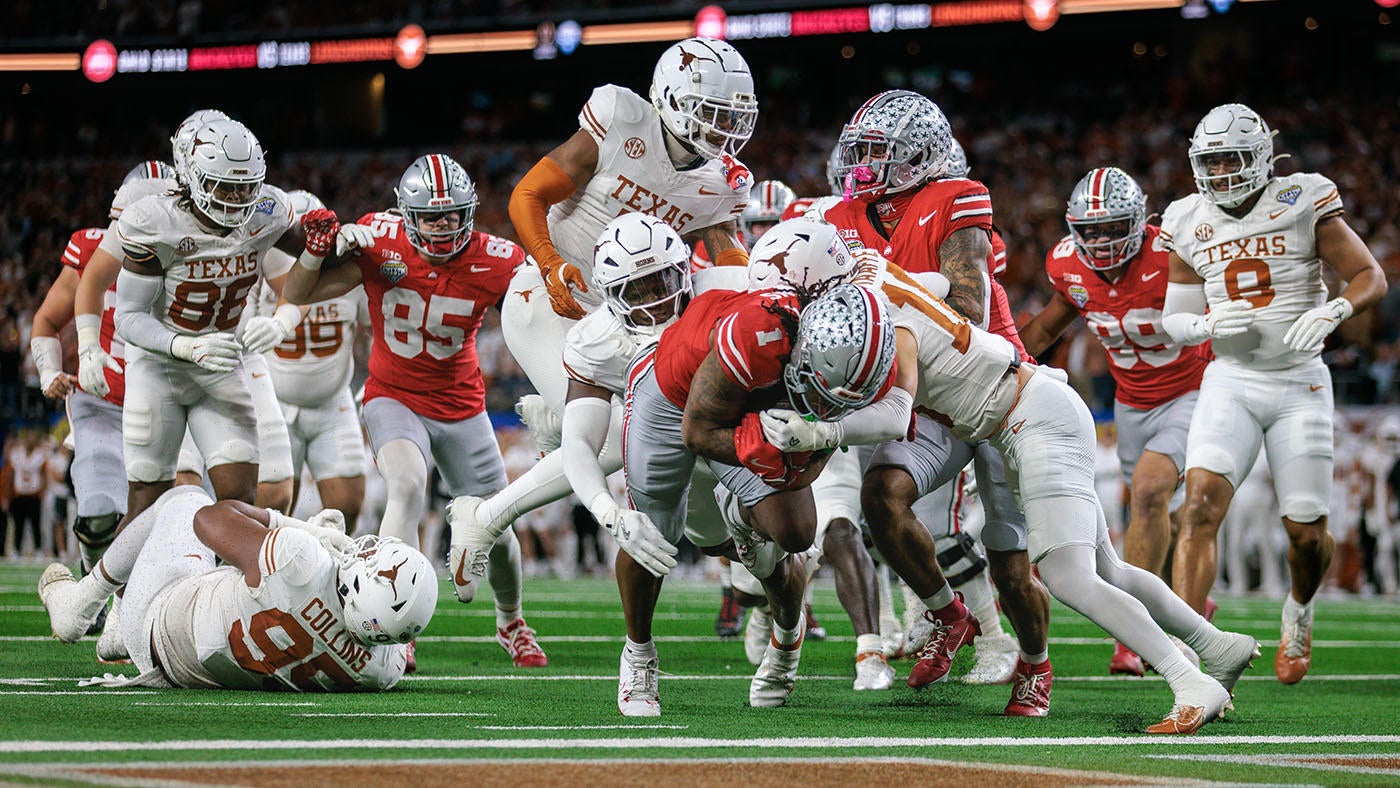
Long before Knute Rockne revolutionized the game with the forward pass, college football harnessed the element of surprise as its key advantage. This unpredictability is what makes the sport so captivating, rooted in the thrill of unknown outcomes.
Unscripted television has a proven track record of drawing in viewers, and sports stand out as the most compelling form of this genre. In an era dominated by screens and legalized sports betting, we crave immediate results; we want to know what happens now!
The College Football Playoff (CFP) framework, particularly with automatic qualifiers, diminishes this element of surprise and can undermine its credibility. Even the athletic directors from the SEC and Big Ten, who are convening this week to discuss playoff expansions, might not fully grasp the implications of this truth.
These two powerhouse conferences are currently in the midst of a strategic advantage, potentially locking in playoff access. Following a similar attempt last year, the SEC and Big Ten are poised to push for four automatic qualifier spots each, starting in 2026.
They have been cautioned about the potential consequences. While not necessarily explicit, any conference with reputable media advisors understands the risks involved. If the outcomes in college football—or any sport—become predictable, the thrill of the game is lost.
This isn’t to suggest that the results of individual games could be predetermined. However, we are hinting that with automatic qualifiers, parts of the CFP field could be established ahead of time. For instance, with four guaranteed slots for the Big Ten, teams like Iowa might secure a playoff position as early as November 1, a full month before the final games are played.
No offense to Iowa, but that scenario is less than ideal; it feels uncomfortably akin to professional wrestling.
Yes, that scripted spectacle we all know. Apologies to Roman Reigns and John Cena, but it’s a valid comparison.
Even though WWE garners immense popularity, we still recognize that the competition is staged, with predetermined outcomes designed to enhance a storyline. There’s nothing inherently wrong with that, as pro wrestling serves its purpose as entertainment.
College football differs markedly in this respect. Once fans begin to perceive manipulation of competitive balance, the sport risks alienating its audience. It’s one thing to debate whether teams are the best or most deserving, but knowing Iowa is guaranteed to finish in the Big Ten’s top four weeks in advance alters the landscape dramatically.
Last year, SEC and Big Ten officials proposed a seeding system where their champions would be assured the No. 1 and No. 2 playoff spots before the season even commenced. If that were to happen, one must wonder: why play the games at all?
While there’s no concrete evidence suggesting that such a proposal will be raised during this meeting, it’s a reminder that there are limits to the college football landscape. The financial momentum doesn’t perpetually flow downhill; even the major players in the sport can significantly miscalculate.
Sports hinge on their reputation. This is why college leaders were alarmed when sports betting gained legal status seven years ago. One scandal could shatter trust.
The CFP has thrived thus far because teams have generally been viewed as deserving participants. While there have been a few controversies (such as Florida State’s inclusion in 2023), a decline in public trust due to blatant favoritism from the Big Ten or SEC could spell disaster for the CFP.
The signs indicating trouble have been present. The playoff faced backlash when it insisted on holding New Year’s Eve semifinal games in 2015, which resulted in dismally low viewership ratings. In fact, since the CFP’s inception, championship game ratings have seen considerable fluctuations.
Over the years, two influential figures have emerged in college football: Big Ten Commissioner Tony Petitti and SEC Commissioner Greg Sankey.
Their athletic directors will convene beginning Wednesday to explore what could feel like a hostile takeover of the sport. Plans will be discussed to expand the playoff to at least 14 teams, as noted by Yahoo Sports. The proposed automatic qualifiers would be distributed among the SEC (four), Big Ten (four), ACC (two), Big 12 (two), Group of Five (one), and at-large (one) teams.
However, any widespread changes must be effectively communicated beyond the closed-door meetings. Fans—Joe Six Pack—will ultimately determine the success of these modifications through their viewership choices. It’s evident that the SEC and the Big Ten not only dominate the CFP, but they also command the sport as a whole, securing the lion’s share of the financial pie and playoff spots while the remaining conferences vie for the scraps.
This might be how it’s intended to function. But with great power comes significant responsibility. Missteps cannot occur.
A Big Ten/SEC College Football Playoff takeover is inevitable, but what if it’s actually the best solution?
Tom Fornelli

Reflecting on the Iowa example from November 2024, CBS Sports estimated that around 45-50 teams were still vying for a playoff spot, a claim supported by key stakeholders involved in designing the original 12-team playoff format.
With eight slots earmarked for the two dominant leagues, the pool of contenders naturally shrinks. Basic arithmetic suggests that even with 14 playoff spots, availability would be limited.
The complexity of the issue is heightened; Power Four leagues have expanded to a size where many teams never even compete against each other during the regular season. Establishing this breadth requires many years. In the inaugural season of the 12-team bracket, discussions arose around Indiana’s strength of schedule and its implications.
This is precisely why stakeholders must navigate this landscape cautiously. Warning signs remain evident, given that the most recent championship showcased two storied programs: Notre Dame and Ohio State—resulting in the fifth least-watched title game since the BCS was introduced in 1998.
Ratings can be influenced by numerous factors, both significant and minor. The CFP may increasingly clash with the NFL, especially if the league opts to extend its regular season to 18 games. Scheduling the championship on a Monday night also continues to present challenges regarding viewership. One industry expert noted that moving the Sugar Bowl from January 1 to January 2 due to a terrorist incident in New Orleans resulted in a staggering five million viewers lost.
Such circumstances are unavoidable, yet other unforeseen challenges could arise. Does the prospect of seeing Michigan versus Ohio State three times in a season enhance viewership? Too much of a good thing could lead to viewer fatigue.
Moreover, ESPN must find a way to recoup its investment. Reports suggest that the network is against expanding the playoff and automatic qualifiers.
All of these factors will likely contribute to lively debate during next week’s CFP meetings involving the nine FBS conferences and Notre Dame.
“[The playoff] can’t become an invitational,” emphasized Notre Dame Athletic Director Pete Bevacqua to CBS Sports recently.
The majority of FBS conferences echo this sentiment. However, the SEC and Big Ten have established dominance over the CFP, controlling a hefty portion of the revenue—about 29% each. That means the remaining 100 schools across seven conferences are left to divide the remaining 42%.
It appears these two leagues have both weighted voting advantages related to the automatic qualifier discussions. Nonetheless, CBS Sports has confirmed that contractual obligations still require thorough discussions among members before any changes can take place.
Ultimately, however, the SEC and Big Ten could withdraw from the current structure entirely and sell their playoff rights to the highest bidder, catering exclusively to their 34-member teams as early as the next decade.
The potential revenue from such an arrangement would be astronomical. Without overt declarations, the SEC and Big Ten indicate they care little about including the remaining 100 schools. Both commissioners are keen on securing higher quality matchups, leading to discussions around scheduling non-conference games to bolster overall competition and playoff access.
The central issue boils down to trust: the SEC and Big Ten lack confidence in the selection committee to adequately represent their teams in the playoff. Thus, they seek guaranteed spots.
While that desire has merits, as these two conferences indeed drive the sport’s popularity and deserve a commensurate share of revenue and influence, it is telling that they have occupied 62% of the 184 BCS/CFP slots since 1998, according to CBS Sports reports.
Behind the inevitability of the Big Ten and SEC gaining access, revenue, power in College Football Playoff
Dennis Dodd

While the Big 12 and ACC harbor reservations toward the automatic qualifiers, securing annual guarantees for two spots—along with potential opportunities for more—can only be advantageous. ESPN wouldn’t be compelled to dish out extra funds for a 14-team expansion, though 16 teams present a different set of discussions.
However, if the SEC and Big Ten are capable of earning those spots most seasons, why predetermine the playoff field? Some explanations are starting to come to light:
- Being the largest conference in history, the Big Ten needs enhanced playoff access for its 18 teams.
- If the SEC adds a much-anticipated ninth league game, it likely prompts the need for expansion and automatic qualifiers to offset the losses incurred by half of its teams.
Currently, the SEC and Big Ten are pursuing their self-interests. It’s no secret that a handful of teams from any conference account for the majority of viewership; the SEC and Big Ten are no exception. Historically, however, this trend has rarely been exercised to such a degree.
Even so, this potential takeover includes schools like Purdue, South Carolina, Vanderbilt, Rutgers, and Northwestern. The true draw lies in teams like Ohio State, Michigan, Penn State, Alabama, LSU, and Georgia, whose marketability makes this transition appealing.
Still, there may come a day when Alabama questions why Vanderbilt receives equal financial benefits. When that day arrives, internal conflicts may emerge within the conferences, leading to cuts among its own teams. But that’s a discussion for another day.
For now, the SEC and Big Ten are indeed a formidable duo. Let’s hope this doesn’t evolve into a wrestling extravaganza.










